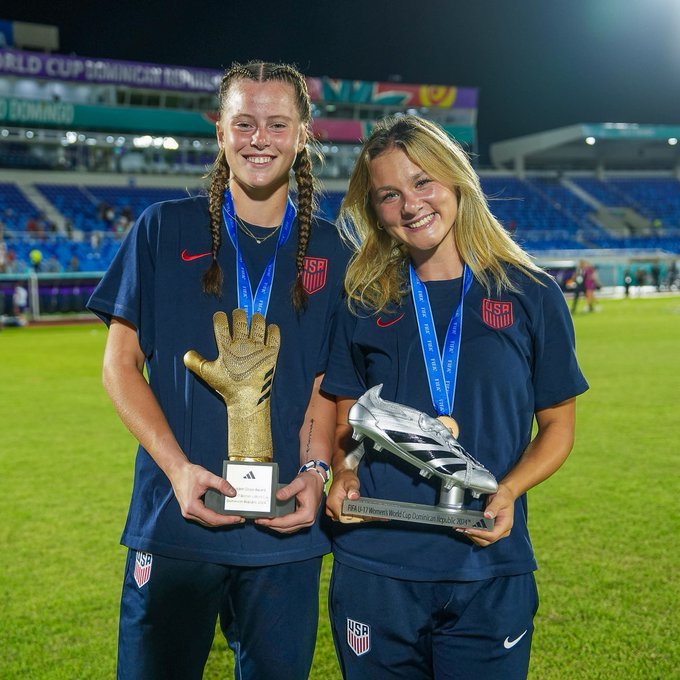Play the Kids!
The United States has set the standard in women’s soccer, whether it be at the national team, club level, or the college game. Strides have been taken in salaries, contracts, training facilities, stadiums, and professionalism that the world can look to as a model. The next area of focus is talent development at the youth level. College has been the main recruiting pipeline for youth players via the previous NWSL college draft. But in 2022, under 18 years old were finally allowed to play in NWSL.
The NWSL has been the only full-time women’s league in the US for over 11 years. The league has had a decade of building but focused primarily on sustaining the league. NWSL teams partnered with local youth clubs or branded a youth club as their own in a variety of youth leagues, with no concentrated academy system. ECNL and GA are the two most popular competitive girls’ leagues with teams divided between them. However, these are still just youth teams versus a strategic succession program. The emergence of the USL Super League has added a new dimension to the perception of the youth pathway.
The USL Super League is almost done with the first half of the first season. As a new league with 8 teams, it felt like it might be a few years for it to find its place in the soccer eco-system. One of their founding pillars is their youth path to pro, with an already established academy pipeline for USL. Players have been in this pool, developing, training, and competing for years with a pathway to women’s professional play finally added.
Stella Spitzer being congratulated by her teammate during her debut match. Image courtesy of Carolina Ascent
A surge of teenage players has become commonplace in the women’s game. Olivia Moultrie took the NWSL to court in order to play a game she was talented at, instead of waiting until she was 18. Alyssa Thompson was the youngest player, 18, when she was drafted first into the NWSL. Lily Yohannes was 16 years 358 days when she became the third youngest player to score for the USWNT. McKenna Whitham was 14 years 1 day when she debuted for professional side NJ/NY Gotham FC. Early in the inaugural season, USLSL teams began adding academy players to academy contracts, allowing young players to maintain their college eligibility and granting them time to decide their future.
Academy contracts are unlimited in the USL SL as opposed to NWSL, who allows 4 players under 18 on each team. Academy players who choose to enter the professional league will get the benefit of playing with and against experienced professionals. Young players coming into the league have the chance to test their skills by playing against women who are stronger, faster, more technical and with deeper knowledge of the game. The league is full of international players, national team players, and long-time professionals. There is no better way to develop those skills than playing minutes during a game. Dallas Trinity players on an academy contract got the opportunity to play against FC Barcelona, UEFA Champions League winners, with a squad composed of Spanish Women’s World Cup winners, invaluable experiences for any teenage player. Academy players are getting first team meaningful minutes and helping their team succeed with game-winning goals in regular season play.
Mentorship for young players can come from the former NWSL players in Amber Brooks, McKenzie George, Erika Tymrack, and many others. “Brooks is known for her leadership qualities,” said Dallas Trinity GM, Chris Petrucelli, in a league news piece, “As an experienced and skilled professional soccer player who has played in a number of leagues and for the U.S. Women’s National Team, her talent and knowledge of this sport will benefit Dallas Trinity FC on and off the field. We believe she will inspire and motivate her teammates at every turn.”
In a new league, with new players, and youth players new to the professional level, even simple things can’t be taken for granted as common knowledge. How to pack for away days? Nutrition for fuel? Recovery to bounce back between heavy game week? Practices? Best local spots for food, fun, and income? How to see out the end of a match? How to get motivated when you’re discouraged? The list of things young players need to be taught is endless and are not learned by osmosis.
Super League had players called up to the USYNT in the first season. These players saw minutes on the field and contributed in significant ways. Impressively, 4 players were called up to the u-19 and u-17 and Stella Spitzer (Carolina Ascent) called up to the u-15 squad. The USYNT u-17 squad took home the bronze medal in their World Cup. Evan O’Steen (Dallas Trinity) was the tournament Golden Glove winner. Opportunities for competitive environments will increase the mental, technical and physical play leading to more competition for the top spots in international competition.
O’Steen on the left with her award. Image courtesy of USYNT social media
USLSL is helping to re-shape the US youth eco-system by allowing more players to develop faster and gain significant experience on and off the field earlier than ever before. The youth players are not just composing a practice squad for these teams but are considered equal members and, on some teams, key players that contribute at a high level with substantial minutes.
Olivia Moultrie said, "If you're good enough, you're old enough." The USLSL Agrees. They are helping to create a path for young players to live their dreams and develop into stars. As the new league works to find ways to differentiate itself and grow, playing the kids seems like a path to success.
- Danielle Gawronski

